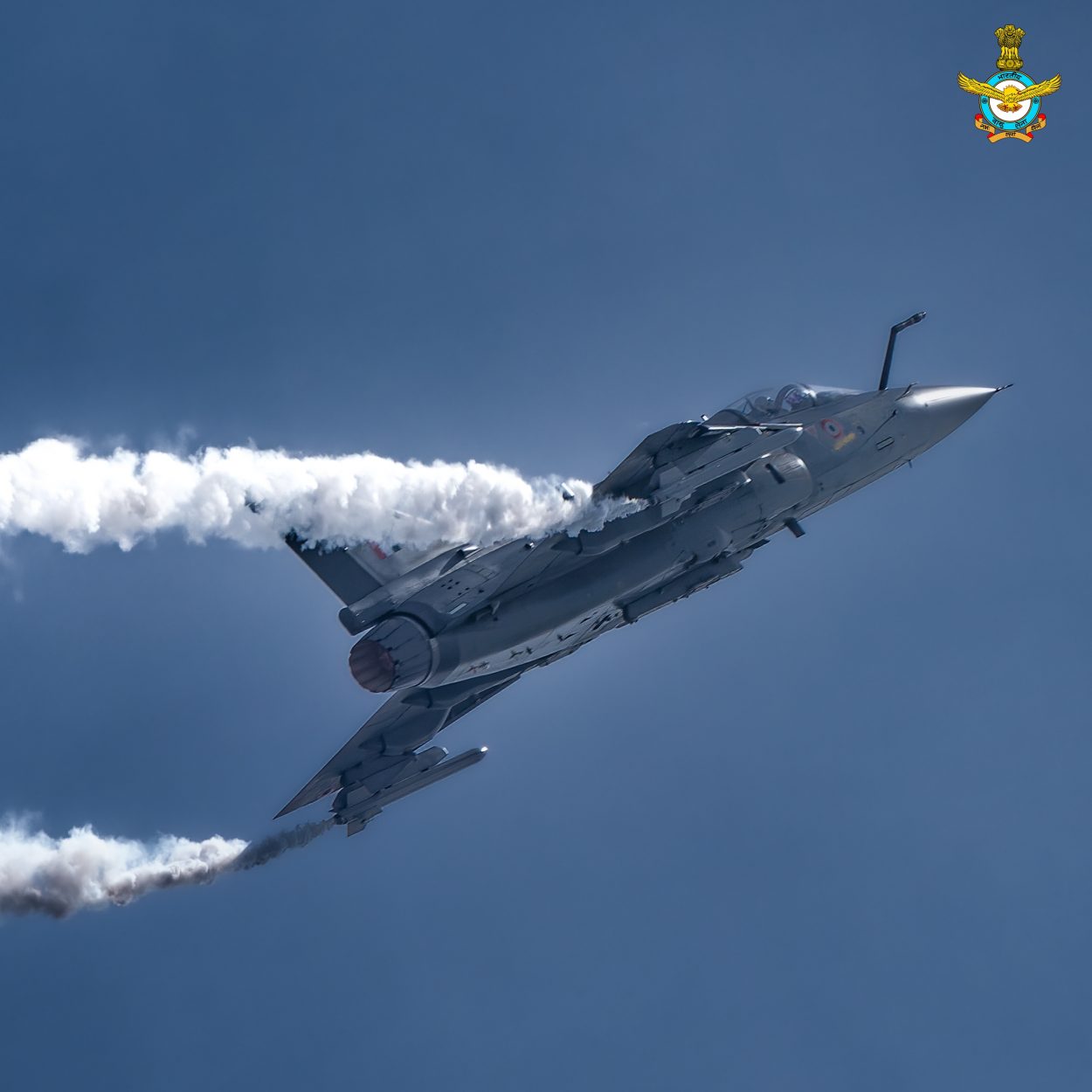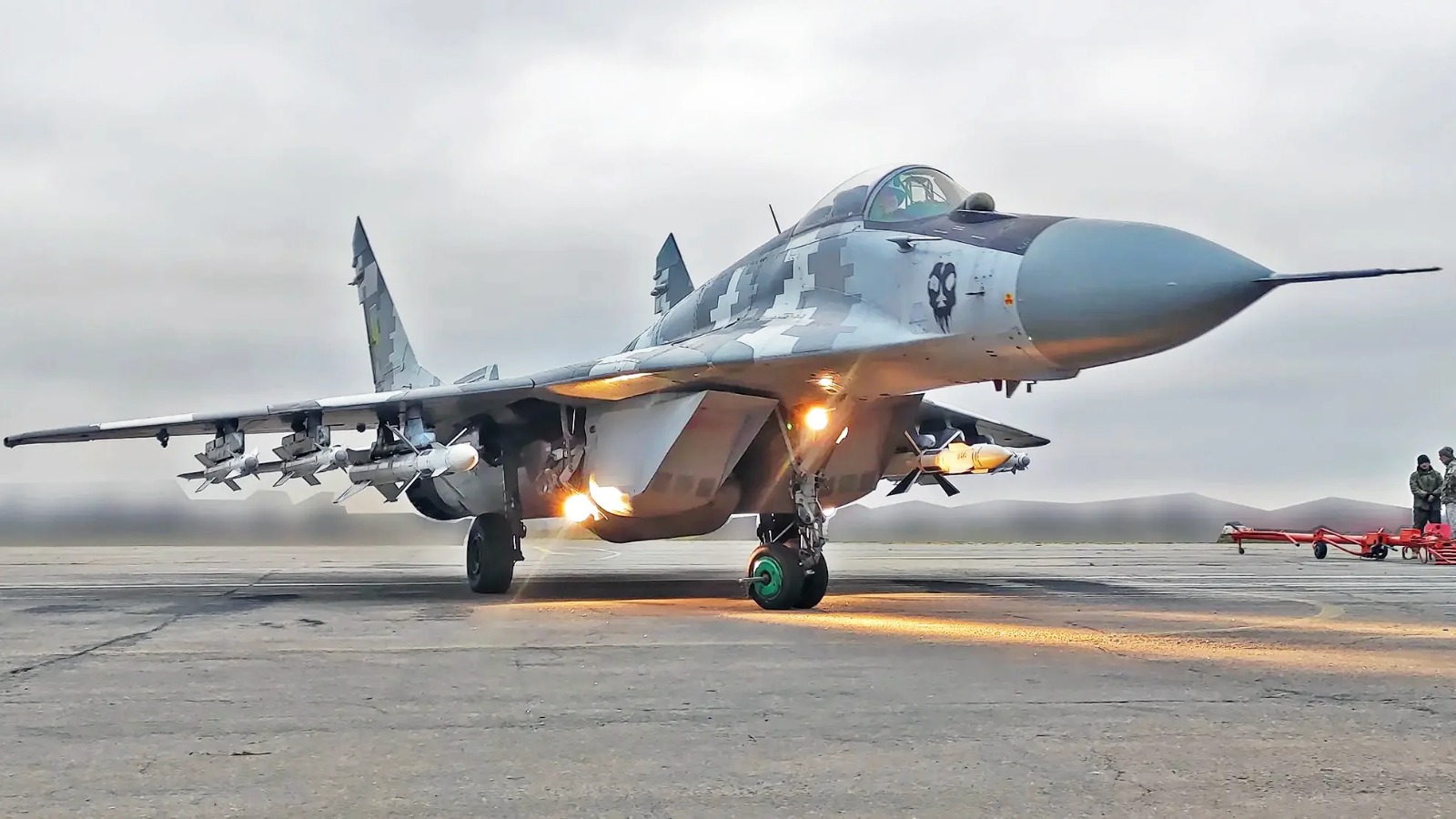India is expanding the scope of operations for the indigenous ‘Tejas’ Light Combat Aircraft (LCA) from just the peninsula to nationwide to integrate the combat jet among the mainstream fighters of its air force to counter threats from Pakistan and China.
India ‘Roasts’ China Over Tibet & Uyghur Muslims Issue; Ex-Army General Says ‘Freedom Is The Birthright Of All’
A final decision on deploying the Tejas squadrons in fighter air bases along the borders with Pakistan and China will be taken later. But the Indian Air Force (IAF) has already begun sending the existing two LCA squadrons on detachments to forward air bases along the western and northern frontiers, as was witnessed recently with a squadron in Awantipur in Jammu and Kashmir for training.
“These detachments are happening nationwide, particularly in the forward air bases. These detachments are to familiarise pilots and the ground staff about operations from these air bases and to provide them experience operating from these locations, with an eye on likely future permanent deployment,” an IAF officer said. He did not wish to be identified, citing rules.
“The squadrons are actively deployed in these air bases in forward areas, and the pilots and ground staff are provided training to operate from the new terrain. This is being done with the eye on the future when the LCA may have to operate from these air bases in the North and Northeast of the country,” the officer said.
The air bases may also need to be geared up to deploy these aircraft in the future; hence, providing them with the experience of handling the LCA squadrons becomes necessary.
Air Mshl PM Sinha, AOC-in-C WAC, visited Awantipur, a forward IAF base which was one of the launching base during Kargil War. He interacted with the aircrew and appreciated their operational preparedness. pic.twitter.com/Ex7qlCM7F6
— HQ Western Air Command, IAF (@hqwaciaf) July 27, 2023
India To Induct More LCA Squadrons
India’s air force is all set to begin induction of the 83 LCA Mk1A variant, produced by the state-run lone aircraft maker Hindustan Aeronautics Limited (HAL), from the first quarter of 2024.
HAL is expected to complete the deliveries of the 83 LCA Mk1A variants, including ten trainers, by 2029. In 2024, HAL will deliver three aircraft and follow them up with 16 aircraft deliveries from 2025 through two production lines.
Ultimately, HAL plans to produce 24 LCA Mk1s from its facility in Bengaluru, for which a third production line that can manufacture eight aircraft a year is being set up at the facility.
When the induction of the 83 LCA Mk1As is completed, these will form part of at least four fighter squadrons of the IAF. With the new LCA Mk1A jets and the two existing squadrons of Tejas, now operational at the Sulur air base near Coimbatore in Tamil Nadu, India would be operating a total of six Tejas squadrons soon, which make up one-seventh of the total 42 sanctioned fighter squadrons of the IAF.
This will be followed up with another six squadrons of the more advanced LCA Mk2 when Tejas would be about one-fourth of the total sanctioned squadron strength.
The IAF currently operates different types of combat aircraft, including the MiG-21, MiG-29, Jaguar, Mirage-2000, Su-30MKI, and Rafale. It plans to retire the MiG-21s soon, followed by the other aging jets, such as the MiG-29, in the years to come, even as it inducts the Tejas fleet.
Going Up Against Chinese & Pakistani Aircraft
Tejas aircraft will form part of the future mainstream aircraft fleet of the IAF, and its operational use will only increase as the number of squadrons grows. India would be operating the Tejas for at least another 30 years and hence would be part of the Indian fighter fleet for a long time.

This would mean the Tejas fleet would have to up its game and be expected to be deployed in operational roles in actual combat situations as the border conflicts with both Pakistan and China escalate in the coming years.
Tejas would have to go one-on-one against Pakistan’s Lockheed Martin-built F-16s and China-Pakistan joint venture JF-17, while it may have to contest for air space on the borders with China against J-20 if needed.
The handicap that the Tejas faces is that it is yet to be tested in combat and has never faced a challenge, as its Indian peninsular deployment meant it is a peace-time combat jet, after all.
But all that could change if Tejas is permanently deployed in one of the forward air bases of India facing West or North, and it would need to patrol the skies over India’s two volatile borders.
Essentially, the Tejas Mk1 and Tejas Mk1A would replace the Soviet-origin MiG-21s, the last squadrons now approaching retirement. At one point, India had about a dozen MiG-21 squadrons and the pilots who flew these flying machine vouch for its performance and rated it relatively high.
But there is a limit to how much IAF can push the first-ever supersonic combat jets that India obtained from the Soviet Union. The number of the LCA Mk1 and Mk1A squadrons would be just half a dozen and the alternative to the 1960s vintage Soviet-era jets that have done well for India in these decades.
LCA-2 To Be Ready Soon
The Tejas LCA Mk2, the ultimate version of the indigenous combat jet that India has been developing for the last 40 years now, got the go-ahead for project completion from India’s highest defense decision-making body, the Prime Minister-led Cabinet Committee on Security chaired by Narendra Modi, in September 2022.
The LCA Mk2, a multirole aircraft more capable and powerful than its earlier variants, will replace the aging western-origin Jaguar, Mirage-2000, and the Russian-origin MiG-29s.

While India abandoned the re-engining project for Jaguars, the Mirage-2000s have already got a life extension through a 2011-approved program for its upgrade by the Original Equipment Manufacturer Dassault Aviation and rearming with European missile maker MBDA-produced MICA missiles.
The three-squadron MiG-29s, too, have gone through an upgrade already. So, it would be some time before these combat jets are retired.
According to India’s Aeronautical Development Agency, an arm of the state-owned Defense Research and Development Organisation, LCA Mk2 would be a 17.5-tonne single-engine aircraft. The completion of the LCA Mk2 development project, at a total cost of Rs 9,000 crore (~US$1.25 billion), has been set for 2027.
Once it achieves its Final Operational Clearance, HAL will be manufacturing it after the completion of the LCA Mk1A production, which is progressing. In February 2023, ADA Director General Dr. Girish S. Deodhare told some Indian media outlets that the IAF sought to induct six LCA-2 squadrons of 18 aircraft each.
During Modi’s visit to the US in June, American engine manufacturer GE Aerospace announced that it had signed a Memorandum of Understanding (MoU) with HAL to produce 99 F-414 fighter jet engines for LCA Mk2.
This agreement has enabled the ramping up of the Indian combat jet’s development and project fruition within the deadlines set for IAF to induct these aircraft.
- NC Bipindra is a 30-year veteran in journalism specializing in strategic affairs, geopolitics, aerospace, defense, and diplomacy. He has written extensively for the Times of India, New Indian Express, Press Trust of India, and Bloomberg News. He can be reached at ncbipindra (at) gmail.com
- Follow EurAsian Times on Google News




